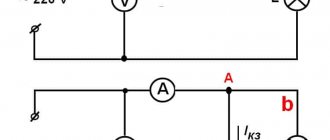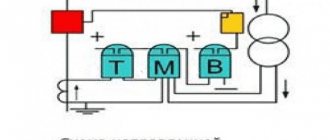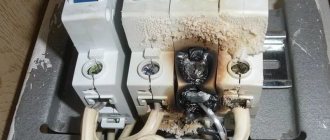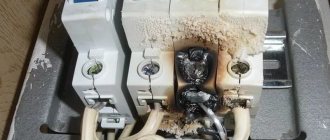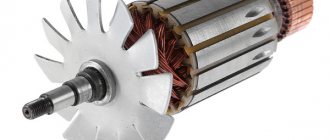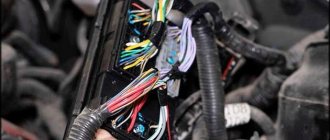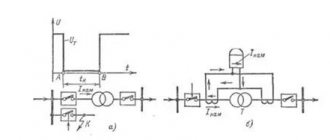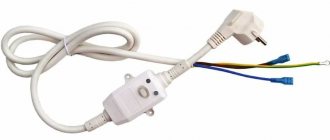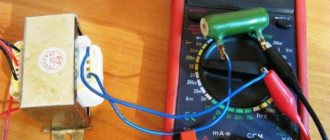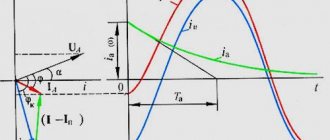Short circuits are the most common problem during emergency operations. A short circuit can occur in either a continuous or temporary electrical circuit.
In temporary electricity, short circuits can occur in both single-phase wiring and a three-phase circuit.
Interphase short circuits are a connection between two different periods, and the most common one is an overvoltage of 380 W between periods.
Single-phase short circuits are typical for wiring where there is a separate neutral. In addition, they represent a disconnection of the phase network and the neutral or the grounding period.
But most often the concepts “to ground” and “to zero” in isolated neutrals are considered one and the same. Such phenomena are called interfacial short circuit.
Concept and reasons for closures
An interphase short circuit of electricity in multiphase circuits is the unintentional connection of insulated conductors with a damaged protective coating.
In some cases, it manifests itself as a single-phase fault to the ground or the body of operating electrical equipment.
This state of the electrical network is a violation of the normal operating mode of the system and is interpreted as an emergency. In this case, at the points where two conductors short circuit or at the points of their contact with the ground, the current increases significantly. Its maximum value sometimes reaches several thousand Amperes. Uncontrolled flows of electricity can lead to devastating consequences.
The causes of emergencies in high-voltage electrical networks are:
- Damage to the protective insulation of each phase conductor due to violations of the operating rules of cable lines.
- Accidental break of one of the cores of an overhead cable and its short circuit to another wire or ground.
- Short circuit of a wire with damaged insulation to the body of an operating electrical installation.
Each case of a short circuit is a consequence of a gross violation of the rules for operating electrical equipment and, in accordance with the requirements of regulatory documents, requires a thorough investigation.
Phase-to-phase fault currents
An important electrical characteristic of a short circuit is its current. When designing electrical installations, it must be calculated using a certain method for several points. This is done in order to correctly select the parameters of electrical equipment and installation of protective devices: cut-off currents of circuit breakers and response characteristics of relay protection. The magnitude of short circuit current (SC) is influenced by the following factors:
- Distance from the fault point to power sources. The closer the circuit is to powerful transformers and generators, the greater the circuit current;
- Type, cross-section and length of connecting cable and overhead lines connecting the power source to the short circuit point. The number and characteristics of switching devices in this circuit and their technical condition. When calculating, all this data is converted into equivalent network resistance. Knowing the power of the electricity source, the short-circuit current is calculated;
- Type of phase-to-phase fault: with a metal fault, the current is the highest, and it is calculated during design. With an arc fault, the current is less. But if the arc is unstable and constantly goes out and then lights up again, transient processes occur, leading to a short-term excess of the rated currents.
With a “smoldering” short circuit, the current is much lower than the calculated one, which makes it impossible for protective devices to react to its occurrence. A smoldering short circuit can suddenly turn into an arc or metal one, the protection will work, but when turned on again, the current will again be below the sensitivity threshold. Finding the location of damage to electrical equipment in this case is difficult and is impossible without measuring insulation or testing with increased voltage.
So, the further the short circuit occurs from the power source, the lower the magnitude of its current. This is explained by the fact that each cable, distribution panel or overhead line increases the equivalent resistance of the electrical network. According to Ohm's law, as the load resistance increases, the current in the circuit decreases.
This allows for selective shutdown of damaged sections of the electrical network. The circuit breaker at the entrance to the apartment with a rated current of 16 A and characteristic “C” has an operating current of the electromagnetic release of 80 - 160 A. A circuit current exceeding 160 A is guaranteed to lead to its shutdown. But the short circuit current in the apartment is unlikely to be enough to trip the switch at the transformer substation that powers the entire house, which turns off at 500A. And it won’t even be noticed by the protection of the cable line feeding the substation.
Types of emergency circuits
According to the type of power supply, all short circuits are divided into damage that occurred in single-phase or three-phase circuits, and according to their number - into single and double short circuits. The simplest case is single-phase lines, in which only a single phase to neutral or ground is possible. A three-phase short circuit has a greater range of possibilities, since the number of wires in the cable increases to 3. The following types of damage are possible:
- Shorting two high-voltage wires together.
- Short circuit of one wire to neutral or ground (single-phase short circuits).
- Contact of two conductors with the ground surface at once.
In each of these cases, including two-phase ground faults, the fault in question manifests itself in a special way, characterized by spreading currents and distributions of emergency potentials. In addition to these factors, the current process is described by such an indicator as touch voltage. This parameter represents the voltage applied to the human body between two points of contact with the bare wire.
The same type of dangerous effects includes the potential difference that appears between parts of the body in contact with a bare wire shorted to ground. With single-phase short circuits, the question of what value the touch voltage reaches when a phase is closed is of particular interest. According to the provisions of the PUE, this indicator depends on the distance between the contact zones and increases with its increase.
In some cases, when the resistance to the flow of current to the ground is too high, the contact voltage reaches a value that is dangerous for humans.
Where do they occur and why?
Short circuits can occur in all electrical installation components:
- In consumers, when insulating gaskets and parts of the housing are damaged, as well as when water gets in.
- In an electric motor. It can occur as a breakdown of the insulation of the motor windings to the frame (to the ground). Sometimes they say “the engine has burned out”; in fact, it simply cannot burn out; usually, increased values of currents flowing through them lead to burnout of the windings, and this is caused by an interturn short circuit. The winding resistance decreases, the current begins to increase, and the winding heats up. Because of this, the insulation is destroyed. After this, the source of damage can reach the windings of adjacent phases, an interphase short circuit will occur, and if part of the conductors with damaged insulation touches the housing, then this is a short circuit to ground (zero).
- Transformer windings. This happens in a similar way to electric motors.
- In ASU, in parts of disconnecting devices, circuit breakers, starters, contactors and other things.
- On high voltage lines.
There are many reasons for the occurrence of interphase short circuits, ranging from contamination, ingress of metal parts, tools, and conductive dust. It follows that the entry of foreign objects into the distribution cabinet leads to a phase-to-phase short circuit or to the housing. If it is grounded, then to the ground, and if it is not grounded, the housing will be at dangerous potential. Touching such a cabinet by a person will result in electric shock.
The strength of the phase-to-phase fault current depends on its type and conditions, let's look at them:
Metallic occurs when two current-carrying parts of opposite phases are connected by a metal object; these can be parts of collapsed metal structures, a metal tool lost in a cable assembly, etc. In this case, the arc does not occur, the metal parts begin to weld to the busbars, the current flows extremely large, it is limited by the resistance of the cables, transformer windings and the part that bridges them. Arcing occurs even when there is an air gap between live parts
It can occur even when the voltage is carelessly measured with a high-voltage indicator or when the interphase space is short-circuited for a short time. Its current is less than that of metal. Smoldering occurs in cable lines, for example when insulators are dirty
The flowing current heats up the area with the short circuit; there are two development options: either the short circuit will eliminate itself, or it will progress as described above. In case of breakdown of semiconductor elements, for example a diode bridge. The current is very large, as with metal.
To limit the interphase short circuit current, reactors are used - electrical devices for limiting the short circuit shock current. Essentially, it is a coil or choke that limits the short-circuit current with its reactance. The characteristics of the line also influence: the greater the length of the line and the smaller its cross-section, the lower the interphase short-circuit current.
Consequences of short circuit
Dangerous manifestations of an interphase short circuit of a three-phase circuit (as well as a single-phase circuit) include consequences associated with the flow of extremely high currents in the line. They naturally cause the following emergency situations:
- A fire occurs due to melting and strong heating of the insulation of phase conductors.
- Failure of power equipment connected to the damaged line.
- Electric shock to a person who accidentally finds himself in the area of an emergency circuit.
When moving in this area, it is important to take into account the so-called “step voltage”, which is formed due to the leakage current spreading into the soil between a person’s legs. This indicator is counted between his feet when moving near a cable that has fallen to the ground. It can also reach dangerous values, especially during accidents in high-voltage overhead lines of 6.3-10 kW. Therefore, the PUE is prescribed to move in these zones with a characteristic goose step: the foot is placed closely to the foot.
The main condition for reliable protection against single-phase and two-phase short circuits in 220/380 Volt power lines is high-quality insulation that can withstand test voltages of up to 1000 Volts. The value of its resistance, according to the PUE, must be at least 0.5 Mohm for each phase. To prevent fires and equipment breakdowns, special protective devices are installed in the power circuits, ensuring instantaneous shutdown of the line when a short circuit occurs. Such devices include:
- Linear automatic fuses.
- Current punches and high-voltage relays.
- Current protection circuit breakers and others.
With their help, it is possible to prevent the destructive consequences of phase faults, which sometimes occur for reasons beyond a person’s control.
Thanks to the timely adoption of appropriate measures, it is possible to preserve the integrity of material resources, as well as to protect operating personnel from electric shock.
What happens from a short circuit and how to prevent them
A short circuit can be characterized by the passage of sufficiently high current values. Its high levels are unsafe for all types of connections and electrical wires. This is typical for an avalanche of disconnection results.
The wire can burn out from the joints, which heat up on their own, causing them to disintegrate faster. As a result, electrical wiring may catch fire and a fire may occur.
In order to prevent bad results between phase disconnections in 220/380 chains, hot inserts, electrical fuses and mechanical switches can be used.
If a current flows in the electrical fuses with values higher than those indicated, they will burn out and open the circuit. But if you haven’t gotten rid of the tearing, it can happen again and again.
If you want to increase the service life and operating conditions, then you must use mechanical switches. They will respond to any increase in current, both large and small.
When there is a phase-to-phase disconnection or between the period and the ground, the mechanical switch will trip and this is called “knocked out the circuit breaker.” To restore the voltage connection again, you need to lift the mechanism handle again.
Phase-to-phase short circuit of a high-voltage line: methods of protection
In supply circuits with an operating voltage of over 1000 Volts, it is not allowed to use automatic disconnectors, since when their power contacts are opened, a high-power arc is formed. In this case, oil, vacuum or gas switches are used to switch lines.
Relay circuits are also used to protect high-voltage networks. They are distinguished by their simple design and are converting devices that operate according to Faraday’s law of induction - inducing an e/m field. The relay equipment that provides protection of high-voltage lines from overvoltages is based on a current transformer. With its help, it is possible to control the amount of current in the emergency line and, when it reaches the limit value, generate a signal that goes to the winding of a powerful electromagnet. This protective device, after being triggered, disconnects the entire supply circuit from the power supply.
Regardless of the availability of switching equipment, the main method of protection against phase-to-phase and three-phase short circuits is the use of cable products with high-quality insulation. If this condition is met, any high-voltage line can withstand short-circuit currents many times higher than the permissible limit.
Electrical protective equipment
Various types of fuses help protect an electrical circuit from short circuits. The simplest are considered to be disposable fuses, which differ in appearance. They act as the weakest link and in the event of an accident they are triggered, breaking the chain and protecting the entrusted area. By sacrificing themselves, these components prevent the destruction and failure of other, more important devices from the action of high temperatures generated due to a sharp increase in current strength.
Fuses for short circuit protection are available in a wide range and can operate with voltages of 600-35000V and currents from a few milliamps to 1 thousand amperes. The design is the same for all, consisting of a fuse-link, a contact, an arc-extinguishing medium or a device for extinguishing the arc. All elements are placed in a common housing. The fuse operates as follows. First, the insert is heated to the melting temperature, after which it melts and evaporates. At the same time, an electric arc occurs, which is quickly extinguished in the insulating gap. After this, the circuit in electrical installations is completely broken.
Normal protection can only be ensured by observing certain conditions:
- The time-current characteristic of the fuse must be lower than this indicator in the protected area.
- Operation occurs in a minimum period of time.
- The protective element must have a high breaking capacity.
- A simple design that allows you to quickly replace a burnt-out fuse-link.
In addition to disposable ones, there is an automatic fuse that conducts current in normal conditions and turns it off in case of deviations from the norm. It is installed at the beginning of the line and protects electrical equipment from overloads, short circuits and low voltage. The main advantage of these devices is their reusable use over a long period of time. More serious protection against short circuits, which has become widespread, is represented by a circuit breaker, also known as an automatic circuit breaker. All components of the device are placed in a housing made of dielectric material. A lever switch is provided to turn the device on and off. The wires are connected via screw terminals. The machine switches the electrical circuit using moving and fixed contacts.
A spring is applied to the moving contact, ensuring quick release. The contacts themselves are disconnected due to the action of an electromagnetic or thermal release. The first device operates almost instantly, the core retracts when the current exceeds a preset value. The thermal release is a bimetallic plate that heats up under the influence of current. Next, it bends and disconnects the contacts. The magnitude of the operating current is set using the adjusting screw.
Short circuit mode
What is short circuit current
How to calculate short circuit current
Short circuit current formula
What is a short circuit, its types and causes
Causes of short circuit
Preventive measures
The most effective and reliable way to prevent short circuits is a professional approach to solving the following technical and organizational issues:
- Selecting a suitable power cable that can withstand high current overloads.
- Strict adherence to the rules for installation and operation of electrical networks, as well as machines and devices connected to them.
- Availability of acceptance certificates for the power supply system upon commissioning.
- The use of modern types of protective equipment that guarantees immediate shutdown of the line in the event of an emergency.
Particular attention is paid to preventive measures carried out in strict accordance with the requirements of current regulations. According to the provisions regarding the maintenance of electrical networks, prevention is carried out according to a pre-drawn up plan approved by the head of a specific department. When implementing it, it is necessary to distinguish between the following types of preventive maintenance:
- Visual inspections.
- Routine and scheduled maintenance.
- Testing of electrical equipment upon acceptance and during operation.
A short circuit of electrical wires to ground is a very dangerous phenomenon that can lead to fire and subsequent fire. In addition, it is fraught with the possibility of damaging people servicing the installation with high voltage voltage. All this ultimately forces us to take special protection measures to ensure normal operation of networks in the absence of critical modes.
